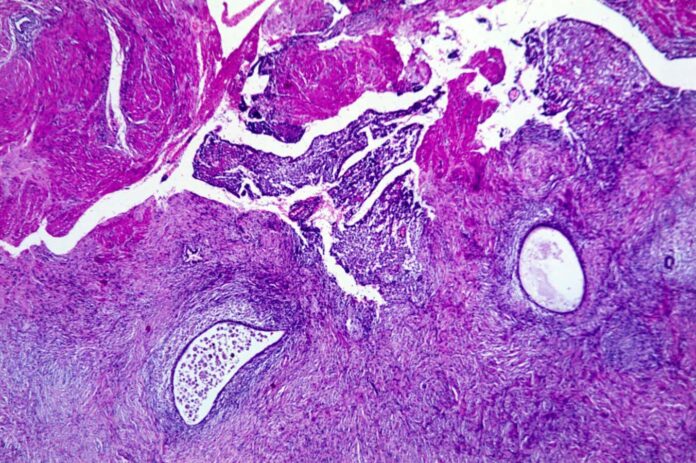
Endometriosis tissue viewed under a microscope
BIOPHOTO ASSOCIATES/SCIENCE PHOTO LIBRARY
Low levels of a particular compound in faeces could be a sign of endometriosis – and supplementation of that compound might even help control the condition.
Affecting nearly 200 million people worldwide, endometriosis occurs when the tissue lining the uterus grows in other parts of the reproductive tract. There is no known cure, but lesions can be periodically removed through surgical procedures once the condition has been diagnosed. However, due in large part to a lack of awareness and understanding, it currently takes an average of more than six years for endometriosis to be diagnosed.
Previous research has suggested that the gut microbiome might play a role in the condition. To investigate further, Ramakrishna Kommagani at Baylor College of Medicine in Houston, Texas, and his colleagues collected stool samples from 18 women with endometriosis and 31 women without the condition. They investigated the bacteria in the faeces as well as the metabolome – the set of chemicals produced by the gut bacteria.
They found that the women with endometriosis had lower levels of the metabolite 4-hydroxyindole in their faeces, possibly due to alterations in the gut microbiome.
Based on that discovery, commercial stool analyses could allow rapid screening for this widely “underdiagnosed, understudied and underappreciated” condition, leading to early and effective management, says Kommagani.
“Stool is so easy to collect, and it’s not invasive like current diagnostic techniques such as laparoscopy [a kind of keyhole surgery],” he says.
To explore whether 4-hydroxyindole might even have a protective effect, the team fed supplementary 4-hydroxyindole to a group of mice that had tissue implanted in their abdomens to induce endometriosis. After 14 days of treatment, those mice did not have fewer lesions compared with control animals, but their lesions were remarkably less severe, and they showed signs of having significantly less pain.
Further experiments indicated that when mice with established endometriosis received 4-hydoxyindole, their lesions vastly improved. The results were similar in mice that had been grafted with human endometriosis lesions, suggesting the treatment could be effective in humans as well.
“We believe this is a very good therapeutic option, because it’s naturally occurring in the body – not a drug or something synthesised,” says Kommagani.
However, larger studies in humans will be needed to confirm whether 4-hydroxyindole can be used to diagnose endometriosis and whether the compound is effective as a treatment.

